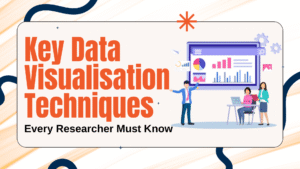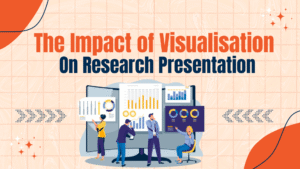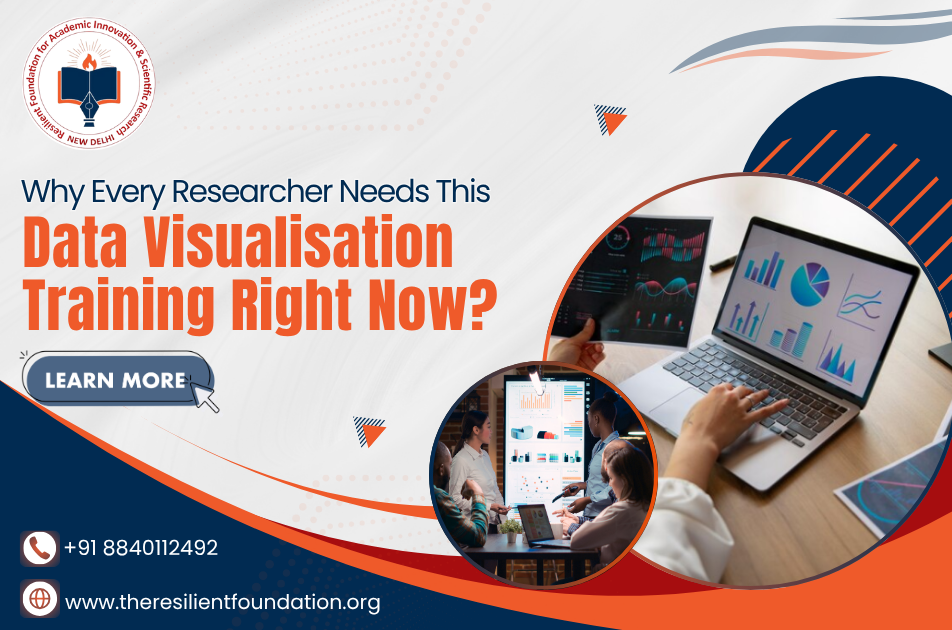Data visualisation is a powerful tool that can transform complex research data into clear, understandable insights. For researchers, mastering data visualisation is essential for effective communication, making research findings more accessible and impactful. Here we will highlight why data visualisation training is crucial for every researcher, the techniques to master, and how it can improve your research presentations.
Key Data Visualisation Techniques Every Researcher Must Know
To make your data easy to understand, here are some smart techniques you should know:

- Bar Charts: If you compare numbers across different groups, bar charts are simple and clear. So, this is often used in data visualisation training.
- Pie Charts: These show how data is divided into parts. But use them only when the parts add up to a whole. They are popular in data visualisation work.
- Heatmaps: These show patterns and trends using colours. So, they are great for large quantitative data analysis training projects.
- Line Graphs: If you want to show changes over time, line graphs help you do that clearly in research data analysis.
- Scatter Plots: These are best for spotting relationships between two variables. Also used in the best data visualisation tools.
- Box Plots: These show the range and middle values of your data. If you do data analysis using SPSS and R, you’ll see them often.
The Impact of Visualisation on Research Presentation
When your data looks good, people listen. Here’s how good visuals change your research game:

- Quick Understanding: Visuals help people see the main idea in just a few seconds. This is one major benefit of data visualisation training.
- Stronger Messages: If your data is shown clearly, your research message becomes stronger and more convincing. That is why data visualisation is now a must-have skill.
- More Engagement: When your visuals are simple and colourful, people pay more attention. This also means they ask better questions. This is the aim of quantitative data analysis training to support deeper talks.
- Trust Building: Clean and honest visuals show that your work is real and truthful. This helps build trust during research data analysis presentations.
- More Sharing: If people like your visuals, they are more likely to share your work. This is why many prefer using the best data visualisation tools.
- Supports Reports and Journals: Good visuals are required in many journals and research papers. Also, you can make these easily once you learn data analysis using SPSS and R.
Common Mistakes Researchers Make While Presenting Data
Even smart researchers sometimes get visuals wrong. So, here are mistakes you should not make:
- Too Much Information: Showing too many charts can confuse people; yet, data visualisation training teaches you to focus on the main idea.
- Wrong Chart Types: Using a pie chart for time-based data is a bad choice. So, learn proper data visualisation methods.
- Bad Colour Choices: Bright or similar colours can make graphs hard to read. So, that’s often solved during quantitative data analysis training.
- Unclear Labels: If your graph labels are missing or messy, thus, it weakens your message in research data analysis.
- Ignoring the Audience: Using technical terms or very complex visuals can confuse your readers. That’s why the best data visualisation tools offer templates for different needs.
- Skipping Tools Training: If you don’t know how to use data analysis using SPSS and R, then you may miss key insights.
Expert Opinion
“Our team sees how researchers transform their work using visuals. Data visualisation training is now a core part of research success.”
— Experts at Resilient Foundation
Get the Right Skills to Present Your Research with Confidence
Here’s how the right training helps you grow fast:
- Step-by-Step Guidance: You’ll learn from basic to advanced tools during data visualisation training.
- Practice with Real Data: You’ll use real research data for better data visualisation skills.
- Workshops on Numbers: Special sessions on quantitative data analysis training are available.
- Expert Help Always Available: Trainers help you improve your research data analysis skills; also, no matter your background, they provide valuable support.
- Access to Tools: Learn the best data visualisation tools in hands-on classes.
- Master SPSS and R: Our training in data analysis using SPSS and R will make you job-ready and research-ready.
So, if you’re ready to make your research easier to present and more impactful, now is the time to start with Resilient Foundation’s programs.

